THE PHILIPPINES
AN ECONOMY ON THE MOVE



AN ECONOMY ON THE MOVE
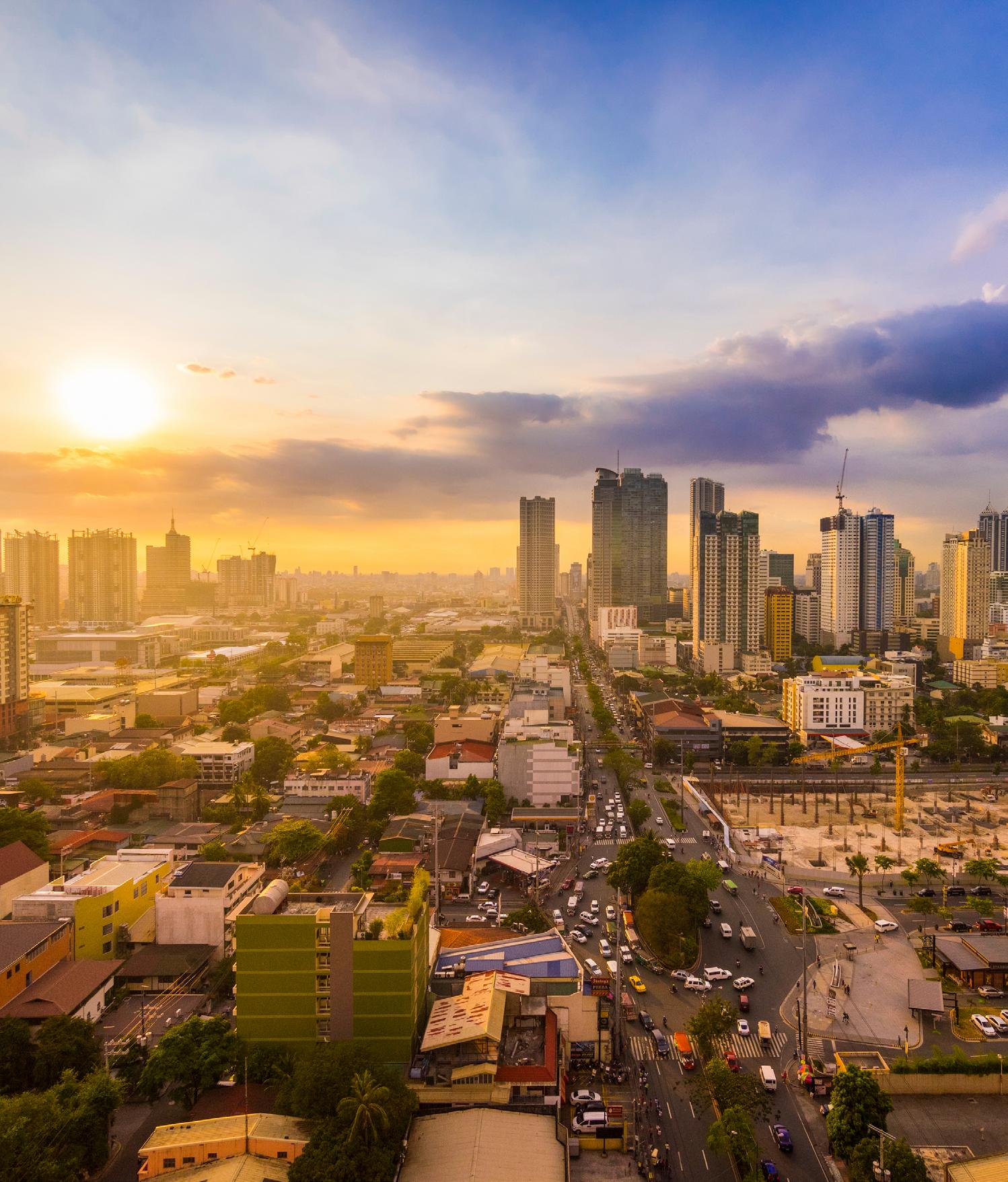





I am honored to invite German and international businesses to explore the Philippines as a strategic and forward-looking investment destination.
In today‘s rapidly changing world, the diversification of partnerships, markets and supply chains is key. Economic security is often used as a catchword for this strategy; resilience and adaptability are essential. The Philippines, with its dynamic economic development, a like-minded government which seeks to attract foreign businesses, and its well-known culture of hospitality is a natural partner and strategic hub.
No doubt: The Philippines is an attractive location to investors. It is the second fastest growing economy in the ASEAN region, with a young, tech-savvy, and highly skilled labor force. English is widely spoken, and the country has a strong tradition of committed service and a high esteem for education. These factors make it an ideal hub for services, manufacturing, and innovative products.
The country’s democratic system and its commitment to democratic values provide a reliable environment for business. Recent legislative reforms have further enhanced its attractiveness. The Retail Trade Liberalization Act, amendments to the Public Service Act and the Foreign Investments Act have opened up key sectors to greater foreign participation. In most industries, full foreign ownership is now possible, with only a few exceptions such as media, public utilities, and certain areas of construction and recruiting. The administration of President Marcos Jr. has introduced competitive tax incentives through the CREATE MORE act, offering reduced corporate income tax rates and targeted incentives for priority industries. These reforms are designed to attract high-value investments and foster innovation, sustainability and inclusive growth. The administration is committed to addressing the challenges which still lay ahead, in particular the ease of doing business. The GPCCI is a strong and important advocate of further progress. I commend them for all their work to make the Philippines even more attractive for businesses. The unique partnership between GPCCI and the Anti-Red-Tape-Authority (ARTA) provides a concrete mechanism for addressing problems.
Being part of the Regional Comprehensive Economic Partnership (RCEP), the Philippines is not only a gateway to the ASEAN market but also a vibrant economy in its own right. Its strategic location, improving infrastructure, and growing consumer base make it an ideal partner for German and international companies seeking to diversify and expand.
I warmly encourage you to consider the Philippines as your next investment destination and I thank GPCCI for its constant efforts to assist German companies to know more about the Philippines. The German Embassy will continue to be a reliable partner for German companies active in the Philippines.
H.E Dr. Andreas Pfaffernoschke Ambassador of Germany to the Philippines

I wish to thank and congratulate the German-Philippine Chamber of Commerce and Industry for this Philippine Brochure 2025.
The tremendous shifts in today’s global security and economic landscape underscore the need for a stronger push for a rules-based international order, for multilateralism, and for free trade.
The Philippines and Germany reaffirmed their adherence to these principles at the highest levels in Berlin in 2024. These principles continue to underpin our bilateral engagements on various other fronts – in defense, human rights, maritime safety and security, economic cooperation, climate change and renewable energy.
The Asian Development Bank, in a report released in April this year, forecasts that the Philippines will continue to be one of the fastest growing economies in the ASEAN region, attributing this to strong domestic demand, sustained investments in social services and public infrastructure, and modest inflation.
The 2024 Climatescope Report by BloombergNEF ranked the Philippines as the world’s second most attractive emerging market for renewable energy investments. This is a recognition of the effectiveness of the Philippines’ comprehensive renewable energy policies, which include auctions, net metering schemes, and tax incentives. German companies have been among the first to recognize this attractive proposition, and have participated in the country’s RE sector in the past years. We look forward to welcoming more German investors in this sector to help us achieve our target of 50 percent renewables in the power sector by 2040.
Against this backdrop, the Philippines and the European Union have resumed negotiations for a Free Trade Agreement which, when concluded, will provide even greater opportunities not just for trade and investments, but open up interest for cooperation in other sectors as well.
Bilateral economic relations point to an upward trajectory in the months and years to come. GPCCI’s Philippine Brochure will come as an excellent resource for us and other stakeholders working to expand and deepen Philippines-Germany relations based on shared values and interests.
Mabuhay ang pagkakaibigang Pilipinas at Alemanya!
Es lebe die Freundschaft zwischen den Philippinen und Deutschland!
H.E Dr. Irene Susan B. Natividad Ambassador of the Philippines to Germany


THE PHILIPPINES: AN ECONOMY ON THE MOVE
Area

Currency Philippine Peso 1 EUR = 66.53 PHP (as of 4 July 2025)
The Philippines offers a strategic gateway to ASEAN, backed by a large domestic market of 117 million people, a young and English-speaking workforce, and improving ease of doing business.
Recent reforms have opened key sectors to full foreign ownership, while government initiatives support infrastructure, digitalization, and green energy.
With pro-investor policies and regional connectivity, the Philippines is positioned as a competitive base for manufacturing, services, and supply chain integration in Asia.
Source: Philippine Department of Industry, Philippine Statistics Authority




RAPID ECONOMIC GROWTH
The Philippines’ dynamic economy presents strong trade and investment opportunities, backed by resilient fundamentals. GDP grew by 5.6% in 2024, with an average of 6.2% over the past three years.


GOVERNMENT SUPPORT 2 3
YOUNG AND SKILLED WORKFORCE
The Philippines offers a young, skilled, and English-speaking workforce. With a median age of 26 and ranking 22nd out of 116 countries (2nd in Asia) in the 2024 Education First (EF) English Proficiency Index, it provides a globally competitive talent pool.
Investors benefit from the support of agencies like the Board of Investments (BOI) and the Philippine Economic Zone Authority (PEZA), which help streamline business registration, offer fiscal incentives, and provide access to ecozones.

The Philippines’ consumer market is a key growth driver. Fitch Solutions projects household spending to grow by 6.2% in 2025, driven by rising incomes, remittances, and a young, urbanizing population. The expanding middle class fuels demand across retail, housing, food, and services.

The Philippines’ cultural affinity with Western countries, coupled with the widespread use of English, creates a conducive environment for foreign businesses to operate and thrive.


The Philippines has recently made significant reforms to liberalize foreign ownership in various sectors, including retail, telecommunications, renewable energy, and other public services, creating new opportunities for foreign investors.

Source: Philippine Department of Finance, Philippine Department of Trade and Industry, Asian Development Bank
In 2024, the Philippine economy grew by 5.7%, making it the second-fastest among ASEAN economies.
Services, including retail, tourism, finance, and IT-BPM, led growth, contributing approximately 60–65% to GDP. Industry, driven by manufacturing and construction, accounted for around 30%.
Inflation eased significantly in 2024: the annual average was around 3.2% (from 6% in 2023), with the Consumer Price Index softening notably in food and transport prices.

According to an OECD forecast, the Philippine Gross Domestic Product (GDP) will likely rise by 5.6% in 2025, which would be below the government‘s growth target of 6-8%. The Bangko Sentral ng Pilipinas (BSP) attributes the weaker start at the beginning of 2025 to a lowerthan-expected growth in private fixed asset investments. Especially, the uncertainties revolving around the US trade policy are causing Filipino companies to postpone some of their investments. However, growth is expected to come from the government’s „Build Better More“ infrastructure program. It comprises 200 key projects with an investment volume of 165 billion US$. Public and private construction investments to are expected to expand by around 10% in 2025.
Private consumption continues to be the main growth driver in the current and next year, with a forecast increase of 5.7% in real terms in 2025. The labor market situation is stable, with an unemployment rate of 4%, and real wages are expected to rise by 2-3% in 2025 and 2026. Inflation is set to remain within the central bank‘s target range of 2-4%.
Foreign trade should also improve. In 2025 exports of services are set to increase by 7%. Demand for business process management (BPM) services from the Philippines is growing. The industry’s revenue could rise by 5% to 40 billion US$ in 2025.
Further economic growth is expected to come from the planned free trade agreement with the European Union (EU). Both sides aim to reach an agreement before Ferdinand Marcos Jr.‘s presidency ends in 2028. Bilateral trade grew by 5% to 18.1 billion US$ in 2024. The EU Commission estimates that reducing tariffs and non-tariff trade barriers could increase the exchange of goods by up to 8 billion US$ per year. As the EU‘s largest trading partner for the Philippines, Germany is wellpositioned to elevate the bilateral trade. In 2024, German exports to the Philippines, mainly consisting of machinery, equipment, pharmaceuticals, and chemical products, increased by 2% to USD 2.1 billion US$.
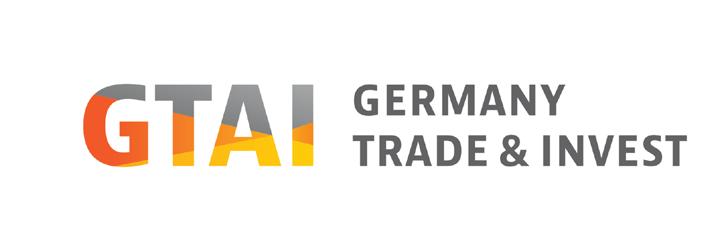
Boris Alex Director, Malaysia and the Philippines Germany Trade & Invest

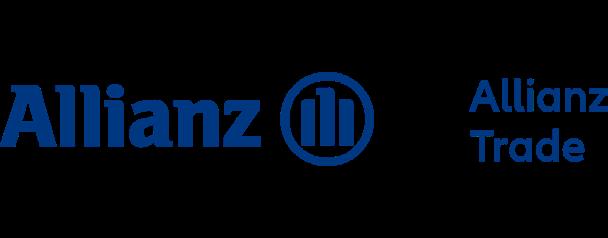


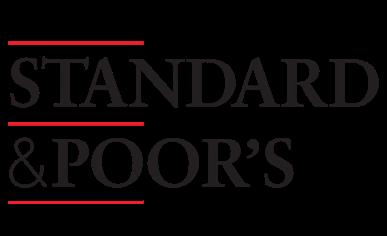
Source: Standard & Poor’s, Moody’s, Fitch Ratings, Allianz Trade

The Philippines holds investment-grade ratings from all major credit agencies: S&P’s BBB+ (Positive outlook), Moody’s Baa2, and Fitch’s BBB (both Stable). Additionally, Allianz Trade (formerly Euler Hermes) ranks the country as low risk, reflecting strong economic fundamentals, disciplined fiscal management, and improved infrastructure.
These ratings support the Philippines’ access to capital at competitive interest rates and reinforce its status as a stable, reliable destination for longterm investment.


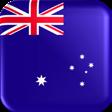
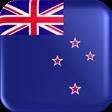
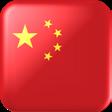
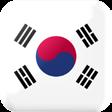









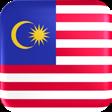







The Philippines is expanding its global trade reach through strategic agreements. As a member of the Association of Southeast Asian Nations (ASEAN), it benefits from regional frameworks like the ASEAN Free Trade Area (AFTA), ASEAN-Australia-New Zealand Free Trade Area (AANZFTA), and the Regional Comprehensive Economic Partnership (RCEP).
Its latest bilateral deal, the Philippines–Korea FTA, entered into force in December 2024, joining existing agreements with Japan (PJEPA) and EFTA states.
The country is also the only ASEAN nation granted EU GSP+ status, offering enhanced access to the European market. Along with ongoing PH–EU FTA negotiations, these agreements support improved market access, tariff reductions, and a more secure environment for foreign investors.
Source: Philippine Department of Trade and Industry, ASEAN, European Commission

The Philippine government has undertaken a series of reforms to create a more competitive, transparent, and investor-friendly environment.
The Comprehensive Tax Reform Program includes landmark laws such as the Tax Reform for Acceleration and Inclusion (TRAIN) and Corporate Recovery and Tax Incentives for Enterprises (CREATE) Acts, which have lowered personal and corporate income tax rates while rationalizing fiscal incentives to attract quality investments.
The CREATE to Maximize Opportunities for Reinvigorating the Economy (CREATE MORE) Act aims to make these incentives even more responsive and strategic.
Meanwhile, the Ease of Paying Taxes (EOPT) bill simplifies compliance through standardized documentation, improved refund processes, and the digitalization of tax services.
On the economic liberalization front, major legislative changes have opened previously restricted sectors to greater foreign participation.
The Public Service Act now allows up to 100% foreign ownership in telecommunications, shipping, railways, and other key industriesexcluding only core public utilities.
The Retail Trade Liberalization Act significantly lowers the minimum capital requirement for foreign retail investors, while amendments to the Foreign Investments Act broaden the scope for 100% foreign-owned domestic and export enterprises, subject to minimal restrictions.
Complementing these efforts, the Revised Corporation Code and Ease of Doing Business Act modernize corporate governance and streamline business processes.
The creation of the Anti-Red Tape Authority (ARTA) further institutionalizes efficient, transparent government transactions, critical for both local and foreign businesses.

Source: Philippine Department of Finance, Board of Investments, Department of Trade and Industry, Bureau of Internal Revenue
Will you shape the future or be shaped by it?
With our spectrum of services, skills and ecosystems, SGV teams help create new value across sectors. sgv.ph

In everything we do, we nurture leaders and enable businesses for a better Philippines.
THE PHILIPPINES: AN ECONOMY ON THE MOVE














Source: Philippine Department of Trade and Industry, Philippine Statistics Authority

Total trade reached EUR 170.4 billion in 2024, with exports amounting to EUR 62.1 billion and imports at EUR 108.2 billion.
Key export markets include the United States, Japan, and China, with Germany ranking 12th . Imports were led by fuel, electronics, and transport equipment.
The Philippines continues to upgrade port infrastructure and logistics systems to improve competitiveness, reduce transaction costs, and support future trade growth.
PHILIPPINE TOTAL EXPORTS IN EUR 2024
62.1B
PHILIPPINE TOTAL IMPORTS IN EUR 2024
108.2B
2024 TOP PHILIPPINE TRADE BY COMMODITY GROUP
FOB VALUE IN MILLION EUR

Electronic Products, 53.4%
Other Manufactured Goods, 6.4%
Other Mineral Product, 4.1%
Machinery & Transport Equipment, 3.6%
Ignition & Wiring Sets (Vehicles, Aircraft, Ships), 3.3%
Coconut Oil, 3%
Chemicals, 2.6%
Gold, 1.8%
Others, 21.8%
Electronic Products, 21.5%
Mineral Fuels, Lubricants & Related Materials, 14.9%
Transport Equipment, 8.9%
Industrial Machinery and Equipment, 4.5%
Other Food and Live Animals, 4.2%
Cereals and Cereal Preparations, 4.1%
Iron and Steel, 4.1%
Miscellaneous Manufactured Articles, 3.7%
Telecom Equipment & Electrical Machinery, 2.8%
Others, 31.3%
Source: Philippine Department of Trade and Industry
In 2024, the Philippines recorded over EUR 170 billion in total trade.
Electronics continued to lead exports, accounting for more than 50% of total outbound goods, followed by machinery, garments, minerals, and agricultural products such as bananas and coconut oil.
Imports were driven by electronic components, transport equipment, and industrial machinery.



TOTAL EUROPEAN UNION EXPORTS IN EUR
6,891M
TOTAL EUROPEAN UNION IMPORTS IN EUR
13,261M
The European Union remains a key export market, with Germany, the Netherlands, and France as top EU destinations.
The Philippines benefits from the EU Generalised Scheme of Preferences Plus (GSP+), granting dutyfree access to over 6,000 product lines, including apparel, processed food, and electronics.
Ongoing discussions for a PH-EU Free Trade Agreement signal deeper trade and investment integration between the two economies.
Source: Philippine Department of Trade and Industry
29.7%
2022-2024, IN MIO EUR




In 2024, the Philippines recorded nearly USD 9 billion in net foreign direct investment, maintaining strong momentum despite global headwinds.
Inflows were led by the United Kingdom, Japan, and the United States, with capital directed toward information and communication, manufacturing, financial and insurance, construction, and real estate industries.
Growth in equity placements signals increasing investor confidence in the country’s stable macroeconomic outlook, expanding consumer base, and improving infrastructure. As reforms continue to liberalize foreign ownership and streamline approvals, the Philippines remains a reliable destination for long-term capital.
Source: Philippine Department of Finance, Philippine News Agency

Others, 11%
Wholesale and Retail Trade, 4%
Real Estate, 12%
Manufacturing, 73%
Major sectors receiving FDI include manufacturing, renewable energy, real estate, financial services, and IT-BPM.
Manufacturing leads in terms of export-oriented investment, particularly in electronics, automotive components, and food processing. Renewable energy, especially solar and wind, has seen increased interest following liberalization of the energy sector.
The logistics sector is also growing due to rising demand from e-commerce and supply chain diversification.

Source: Department of Trade and Industry, Philippine News Agency


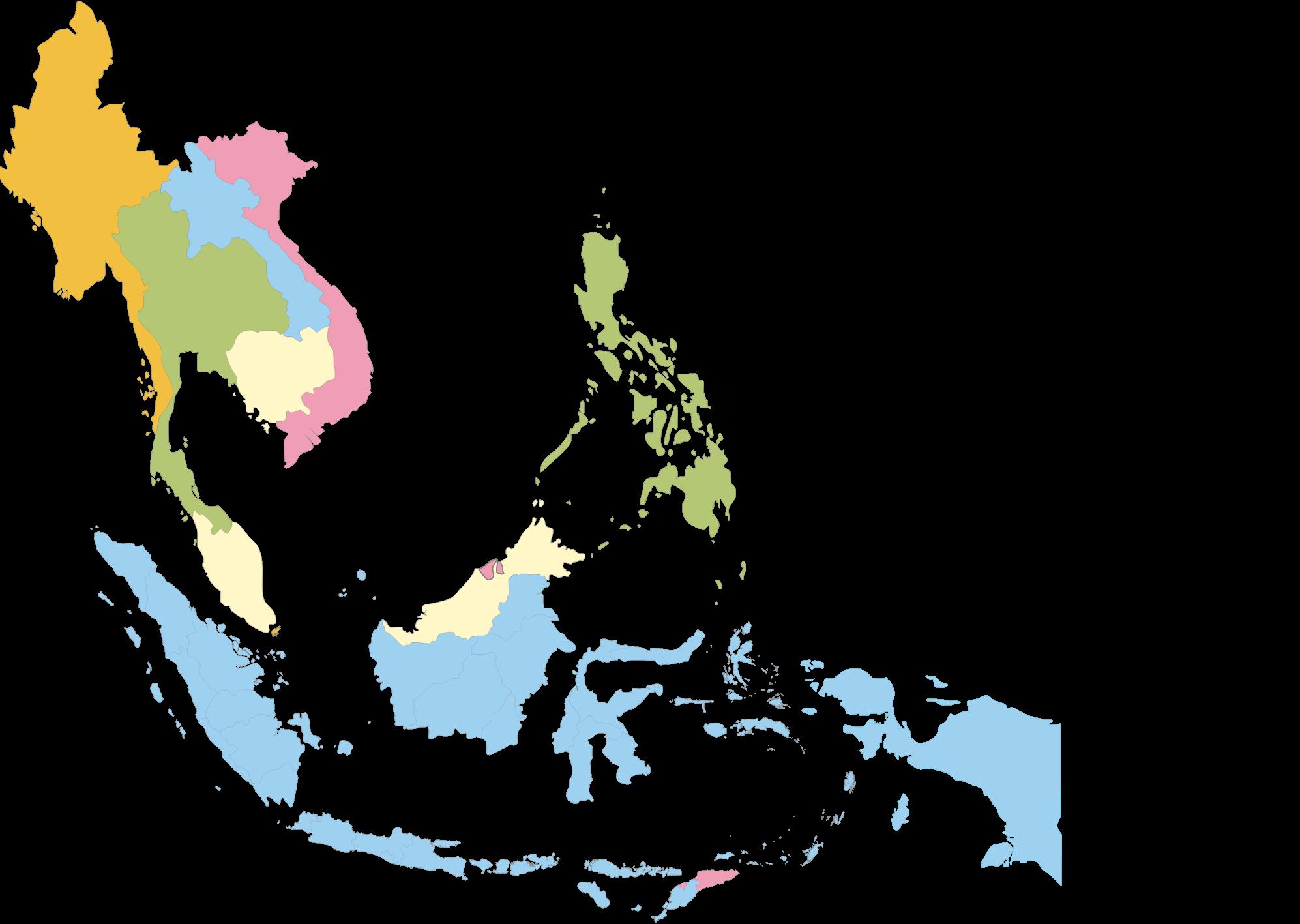




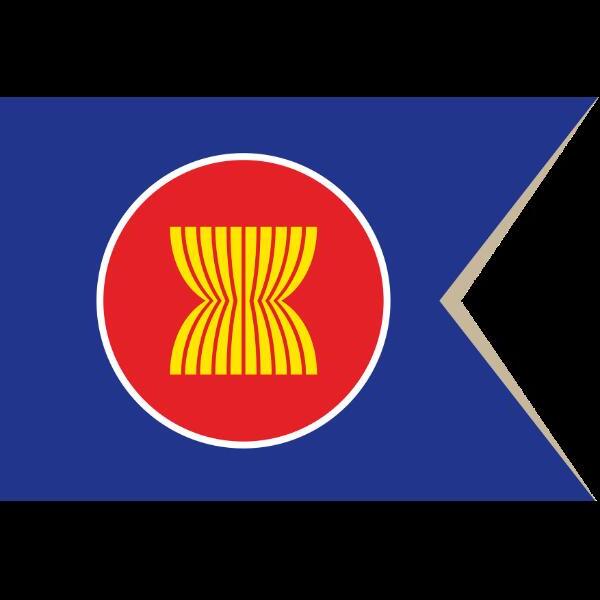
The Philippines is a founding member of ASEAN, a 10-nation regional bloc that promotes economic integration and free trade.
Through the ASEAN Free Trade Area (AFTA), the Philippines enjoys reduced tariffs and easier access to a market of over 660 million people.




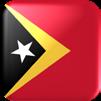
ASEAN also provides a platform for infrastructure collaboration, regional digital initiatives, and shared sustainability efforts.
The region’s combined GDP ranks among the world’s largest economic zones, with Timor-Leste set to become its 11th member in October 2025.
TRADE WITH ASEAN BY TOP COMMODITY GROUPS
Electronic Products, 57.5%
Other Manufactured Goods, 8.2%
Cathodes and Sections Of Cathodes, Of Refined Copper, 7.0%
Coconut Oil, 4.2%
Machinery & Transport Equipment, 4.0%
Other, 19.1%
Source: ASEAN Secretariat, Philippine Department of Trade and Industry
Transport Equipment, 17.1%
Mineral Fuels, Lubricants & Related Materials, 16.9%
Electronic Products, 13.9%
Cereals and Cereal Preparations, 7.6%
Other Food and Live Animals, 6.7%
Other, 37.8%
In 2024, ASEAN accounted for around 23% of the Philippines’ total trade, with Vietnam, Singapore, Thailand, Malaysia, and Indonesia among the top partners.
Trade with ASEAN members focuses on electronics, petroleum, chemicals, transport equipment, and agricultural goods.
Regional trade continues to deepen through ASEAN-led agreements like RCEP offering access to lower tariffs and harmonized trade rules across Asia-Pacific.
TOTAL ASEAN EXPORTS IN EUR
9,402M
TOTAL ASEAN IMPORTS IN EUR
30,764M
THE PHILIPPINES: AN ECONOMY ON THE MOVE

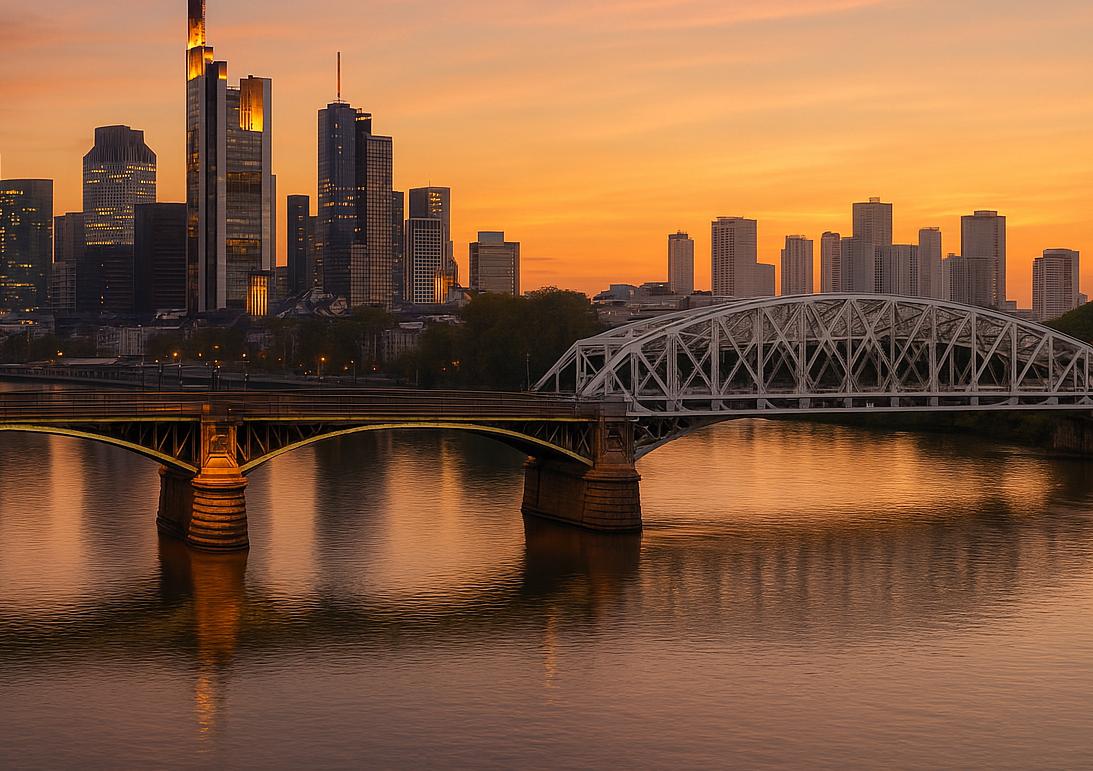
GERMAN-PHILIPPINE TRADE
TOTAL TRADE OF GERMANY WITH THE PHILIPPINES 2022‑2024 IN MIO EUR

In 2024, total bilateral trade between the Philippines and Germany reached approximately EUR 3.9 billion, making Germany the Philippines’ largest EU trading partner.
Philippine exports to Germany reached EUR 2 billion, while imports from Germany were at EUR 1.8 billion.
1,833M 2024
2,087M
Source: Philippine Statistics Authority, Philippine Department of Trade and Industry
PHILIPPINES: AN ECONOMY ON THE MOVE

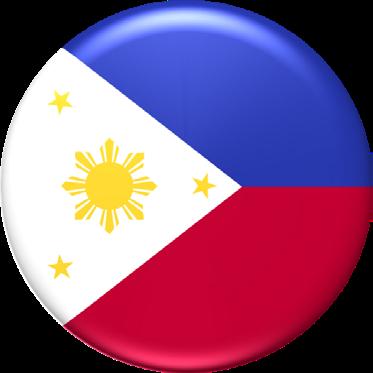
GERMAN EXPORTS TO AND IMPORTS FROM THE PHILIPPINES 2024

Electronics, 21.7%
Chemical products, 16.1%
Machinery, 15%
Air-, water - & railway vehicles, 13%
Electrical engineering, 6.4%
Food, 6.3%
Measuring & control technology, 4.4%
Other, 17%
Source: Germany Trade and Invest
Electronics, 60.8%
Electrical engineering, 21.1%
Machinery, 2.7%
Foodstuffs, 2%
Chemical products, 1.8%
Measurement & control technology, 1.7%
Natural oils, fats ,waxes, 1.5%
Textiles/clothing, 1%
Top Philippine exports to Germany include semiconductors, coconut products, automotive wire harnesses, and processed food.
Imports from Germany focus on high-value goods such as industrial machinery, vehicles, pharmaceuticals, and precision tools.
The trade structure reflects Germany’s role in supplying critical technology and industrial inputs, while the Philippines supports Germany’s manufacturing with components and agri-based inputs.
Bilateral trade is further facilitated through GSP+ privileges and rising demand in green and digital technologies.
Air, water- & railway vehicles, 0.8%
Raw materials (excl. fuels), 0.7%
Other, 5.9%

Source: Philippine Department of Finance
Germany is a consistent source of FDI for the Philippines, with a total investment inflow of approximately EUR 127 million in 2023.
Key sectors include automotive electronics, aviation, IT services, logistics, healthcare, and industrial testing.
Companies like Continental, Lufthansa Technik, Bosch, DHL, and Deutsche Bank have established long-term operations.
German firms are increasingly exploring opportunities in renewable energy, digital infrastructure, and vocational training.
19.22%

TOP THREE RISKS FOR COMPANIES IN THE PHILIPPINES



German-Philippine companies remain cautiously optimistic about their business outlook over the next 12 months, identifying the Philippines as a strategic destination for growth despite ongoing global and domestic challenges.
Firms cited concerns including regulatory uncertainty, demand fluctuations, rising raw material costs, and the impact of international trade dynamics such as tariffs and supply chain shifts. Locally, attention is also focused on the implications of the upcoming elections for economic stability.
At the same time, businesses see opportunities in expansion, employment, and skills development, particularly in relation to the anticipated EU-Philippine Free Trade Agreement, expected to influence long-term investment and sourcing decisions.
WHAT

REPORT THAT NEW US TRADE POLICIES DO NOT HAVE AN IMPACT ON THEIR LOCAL OPERATIONS
THE PHILIPPINES: AN ECONOMY ON THE MOVE
• More Trade Possibilities for EU and SEA
• Alternative Markets
• Diversification
POSITIVE NEGATIVE
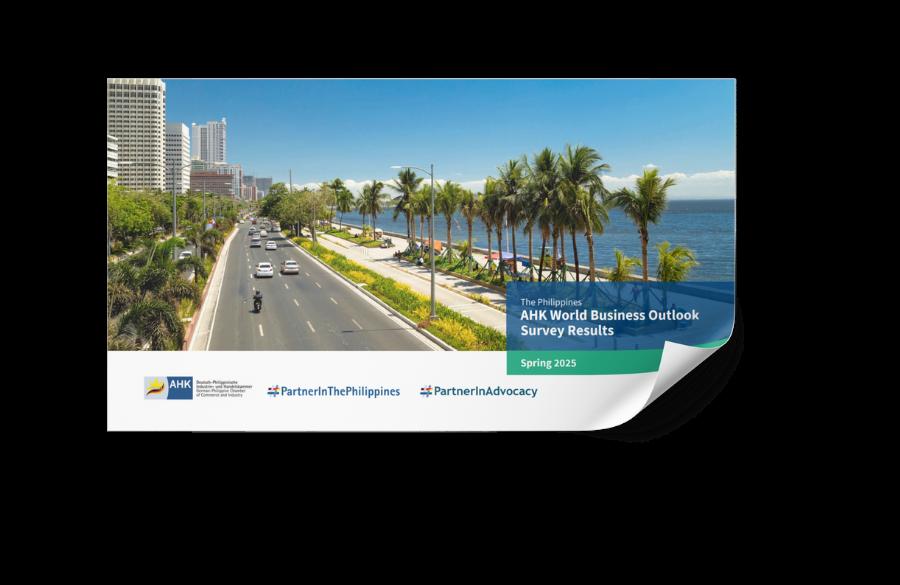
of the German Chambers of Commerce Abroad, delegations and representative offices (AHKs).
• Increased Competitors
• Import Costs
• Product Cancellation Costs
• Supply Chain Disruption
The Spring 2025 Survey was conducted 17 March to 11 April 2025. It collects feedback from almost 3,500 German companies (130 from the Philippines in Spring 2025), branches and subsidiaries worldwide as well as companies with close ties to Germany.
THE PHILIPPINES: AN ECONOMY ON THE MOVE



Source: Philippine Department of Finance, Philippine Department of Trade and Industry, Asian Development Bank
With over 63% of its population in the workingage bracket (15–64 years old), the Philippines offers a demographic advantage few economies can match.
The median age is just 26.1 years old, making it one of the youngest labor forces in Asia.
This age structure supports long-term economic growth, sustained consumption, and a steady supply of trainable, tech-savvy, and English-speaking workers.
For businesses looking to invest in industries with high human capital needs, such as manufacturing, IT-BPM, logistics, or healthcare, this youth dividend is a strategic asset.

26.1

MINIMUM WAGE RATES
As of 2024, the unemployment rate in the Philippines stood at 3.83%, a gradual decline from previous years, while the underemployment rate remains at around 12.85%.
The daily minimum wage varies by region, ranging from PHP 366 to PHP 645 (approx. EUR 5–10) depending on location and sector.

Source: Philippine Statistics Authority, Philippine National Wages and Productivity Commission
HIGHER EDUCATION GRADUATES BY DISCIPLINE GROUP AY 2022-2023

HIGHER EDUCATION GRADUATES IN AY 2022‑2023
828,760
Source: Philippine Commission on Higher Education, Education First (EF) English Proficiency Index
The Philippines produces over 800,000 higher education graduates annually, with a growing share in STEM fields, including engineering, IT, and health sciences.
The country ranks 2nd in Asia for English proficiency (22nd worldwide), giving it a clear edge in global services.
The country also promotes Technical and Vocational Education and Training (TVET) through the Technical Education and Skills Development Authority (TESDA) to meet industry needs in trades and services.


FIVE LARGEST SEAFARER SUPPLY COUNTRIES

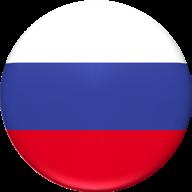
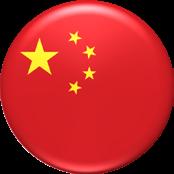


The Philippines is the world’s top supplier of maritime labor, accounting for over 13% of global seafarers.
Around 400,000 Filipino seafarers are deployed annually, supported by a strong maritime education framework and over 80 accredited maritime schools.
Filipino seafarers are known for their professionalism, English fluency, and adaptability.
The country maintains compliance with international standards like the STCW Convention, ensuring quality manpower for global shipping and cruise industries.

Source: Philippine Maritime Industry Authority, Baltic and International Maritime Council, International Chamber of Shipping

LICENSURE EXAM PASSERS
951,105 REGISTERED FILIPINO NURSES
REGISTERED NURSES WHO HAVE MIGRATED
316,416
Source: Philippine Professional Regulation Commission, Philippine Department of Health
The Philippines is a leading exporter of healthcare talent, particularly nurses, caregivers, and medical technicians.
Filipino healthcare workers (HCWs) are sought after globally for their clinical competence, compassion, and English proficiency.
The Philippines is one of the world’s top sources of nursing professionals, with over 950,000 registered nurses and a long-standing reputation for producing highly skilled, English-speaking healthcare workers.
Over 300,000 Filipino nurses are currently working abroad, with UK, Japan,


THE PHILIPPINES: AN ECONOMY ON THE MOVE
PROJECTS BY SECTOR
135 PHYSICAL CONNECTIVITY







To support its rapidly growing cities and economy, the Philippines launched Infrastructure Flagship Projects, a next-generation infrastructure program continuing the momentum of Build, Build, Build.
With over EUR 145 billion in planned investment, the program includes 186 flagship projects in transport, energy, water, health, digital, and agriculture, many open to foreign and PPP participation.
As of 2024, there are 8 finished and 67 ongoing flagship projects, while others are under procurement or feasibility studies. 35 offer PPP opportunities.

Source: Philippine Department of Economy, Planning and Development
186 STREAMLINED PROJECTS IN 2024



































The Philippines has over 80 commercial airports, including 8 international gateways such as the Ninoy Aquino International Airport (NAIA), Clark, and Mactan-Cebu. These connect the country to major global markets and tourist hubs.
Ongoing infrastructure projects -like the Bulacan Airport and NAIA rehabilitation - aim to ease congestion and enhance capacity.
With government support and Public-Private Partnerships, airport modernization plays a key role in improving mobility, trade logistics, and investor access across the archipelago.

International Airports

Principal Airports
Source: Civil Aviation Authority of the Philippines (CAAP)









As an archipelagic nation, the Philippines depends heavily on maritime logistics, with over 100 commercial ports across its islands.

































Manila Port, Batangas, Subic Bay and Cebu are key international gateways for cargo and container traffic.






























Ongoing upgrades aim to modernize port infrastructure, improve turnaround times, and support regional trade.
Strong port connectivity supports manufacturing, agriculture, and logistics sectors crucial for investors and exporters.
















































Sub-ports
Source: Philippine Ports Authority (PPA)

The Philippines has over 224,000 km of roads, including more than 35,000 km of national roads connecting cities, ports, and industrial zones.
Expressways like NLEX, SLEX, TPLEX, and CALAX
link key growth regions such as Metro Manila, CALABARZON, and Central Luzon, reducing travel time and boosting logistics efficiency.
The government continues to invest in road expansion and maintenance, with a focus on infrastructure outside urban centers.
Major ADB-financed railway projects, like the Malolos–Clark and South Commuter Railways, are also underway to enhance long-term connectivity and support multimodal transport.
Pan-Philippine Highway
City/Municipality
Primary Road
Secondary Road
Tertiary Road
Source: Philippine Department of Public Works and HIghways
THE PHILIPPINES: AN ECONOMY ON THE MOVE
ELECTRICITY CONSUMPTION BY SECTOR IN GWH
GROSS POWER GENERATION BY PLANT TYPE IN GWH
Oil-based, 1%
Renewable Energy, 22% Coal, 63%
System Loss Utilities Own Use
The Philippines’ total electricity consumption reached approximately 126,941 gigawatt-hours (GWh) in 2024, driven by strong demand from households, industry, and services. The country’s energy mix remains dominated by coal (over 60%), followed by natural gas, oil, and renewables.
Renewable energy contributes around 22% of the power generation mix, with key sources including geothermal, hydro, solar, and wind. The government is aiming for a 35% renewable share by 2030, supported by the Green Energy Auction Program and policy reforms encouraging foreign investment in renewables.
Natural Gas, 14% Wind, 4%
Source: Philippine Department of Energy
Biomass, 5% Solar, 14% Hydro, 39%
Geothermal, 38%
Efforts are also underway to modernize the grid and improve energy access across islands. As energy demand continues to rise, expanding clean, reliable, and affordable energy remains a national priority.




It’snevertooearlytostartbuildinga globalnetwork.AttheGerman EuropeanSchoolManila(GESM),our internationally-accreditedprogramsfrom KindergartentoGrade12openstudents uptoaworldofopportunities,whetherthey seetheirfutureinGermany,otherpartsof Europe,oranywhereintheworld.Witha diversestudentbodyandtheopportunityto developproficiencyinmultiplelanguages (German,French,and/orSpanish),GESMoffersa uniqueenvironmentforbuildingmeaningfuland far-reachingglobalconnections.
Scheduleacampusvisittofindoutmore. www.gesm.org
O VER
290 MEMBERS SINCE 2008
OVER 1 0 0 MEDIA MENTIONS OVER
55 EVENTS WITH OVER
2,000 EVENT PARTICIPANTS
GPCCI in Numbers 2024-2025
30 TRAININGS AND INFO SESSIONS WITH
372 PARTICIPANTS
3
5,957 WEBSITE VISITORS


As one of the fastest-growing economies in Asia, the Philippines offers vast opportunities for global business. The German-Philippine Chamber of Commerce and Industry Inc. (GPCCI)/AHK Philippinen is proud to play a vital role in strengthening German-Philippine economic relations, fostering partnerships, and driving growth.
Since our establishment in 2008, we have remained committed to supporting our members and customers through professional, intercultural, and knowledgeable services.
Whether facilitating market entry, supporting business expansion, or representing Germany as the strongest European economic partner, GPCCI provides invaluable expertise and resources.
At GPCCI, we do not just build bridges between markets - we create lasting partnerships and opportunities that shape the future of German-Philippine trade.


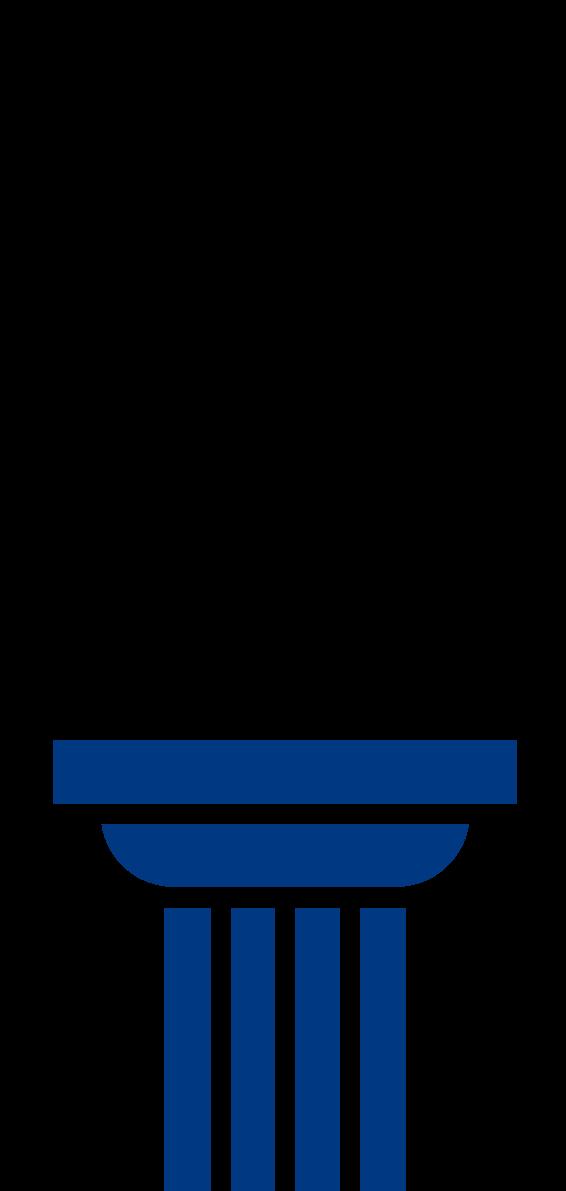
In 150 locations in 93 countries around the world, the members of the German Chamber Network (AHKs) offer their experience, connections and services to German and foreign companies. AHKs are located in all countries which are of special interest for German companies.
OF GERMAN COMPANIES
We represent German business interest in the country and are the first point of contact for German foreign trade promotion.
We provide a membership platform for effective interaction with politics, business, and administration.


We support German business activities under the ‚DEinternational‘ brand with regard to market entry and expansion.
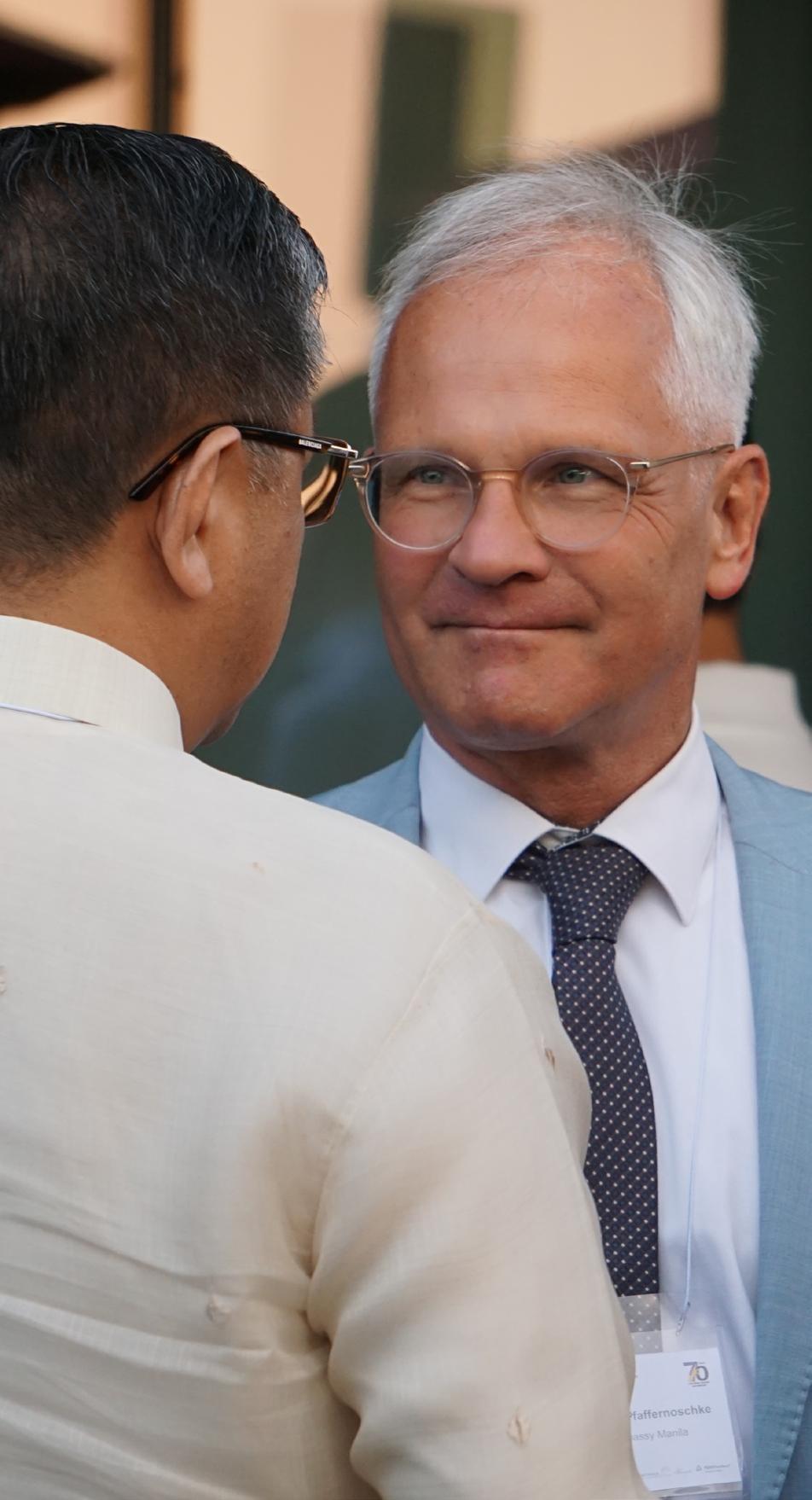
Interested to elevate your brand and unlock a multitude of business opportunities? As a GPCCI Member, you enjoy direct access to this large, influential business network in the Philippines and benefit from our services and events. At GPCCI, your success is our success!
YOUR BENEFITS OF BECOMING A GPCCI MEMBER:
• Networking and Educational Events
• Visa Support
• Translation & Interpretation
• Marketing Opportunities & Services
• Member4Member Program
• Event Consultancy
SCAN THE QR CODE FOR MORE IN-DEPTH INFORMATION
• General Inquiries & Contact
• Government and Chamber Relations
• Trainings & HR Consultancy
• Trade Fair Participant
• Corporate Social Responsibility (CSR)

Interested in becoming a member?
Email Ms. Kat Rodriguez Reyes at kat.rodriguez@gpcci.org.
THE PHILIPPINES: AN ECONOMY ON THE MOVE

We provide comprehensive support for businesses aiming to enter the Philippine market.
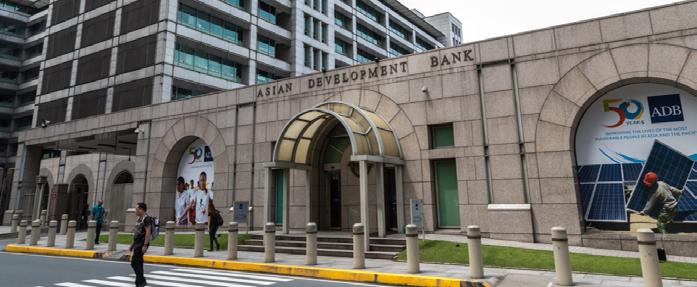
Gain insights into projects and tenders, receiveguidance through the bidding process, and connect with key stakeholders at the bank.

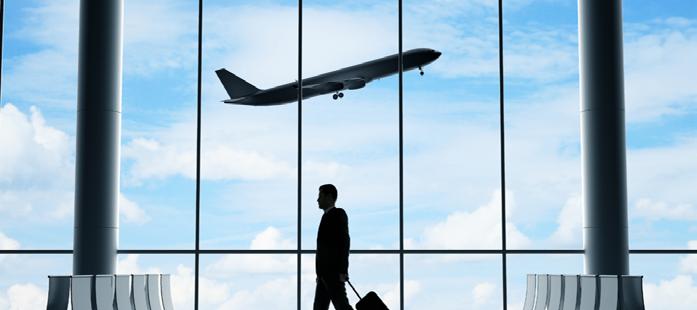
An AHK employee manages your business activities in the Philippines.
We assist German companies in navigating the process of hiring Filipino workers.


We offer customized training programs tailored to the needs of your company.
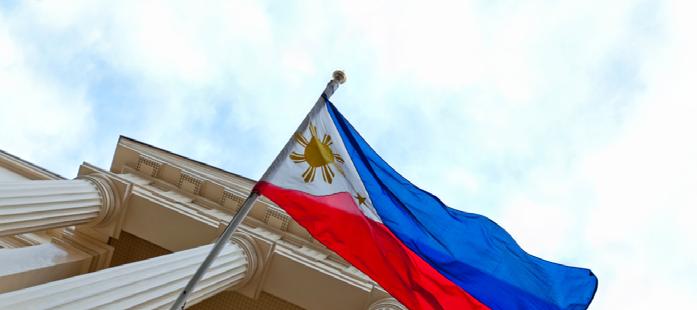
The Government Affairs Department advocates for German businesses and connects them with Philippine government agencies. Government Affairs
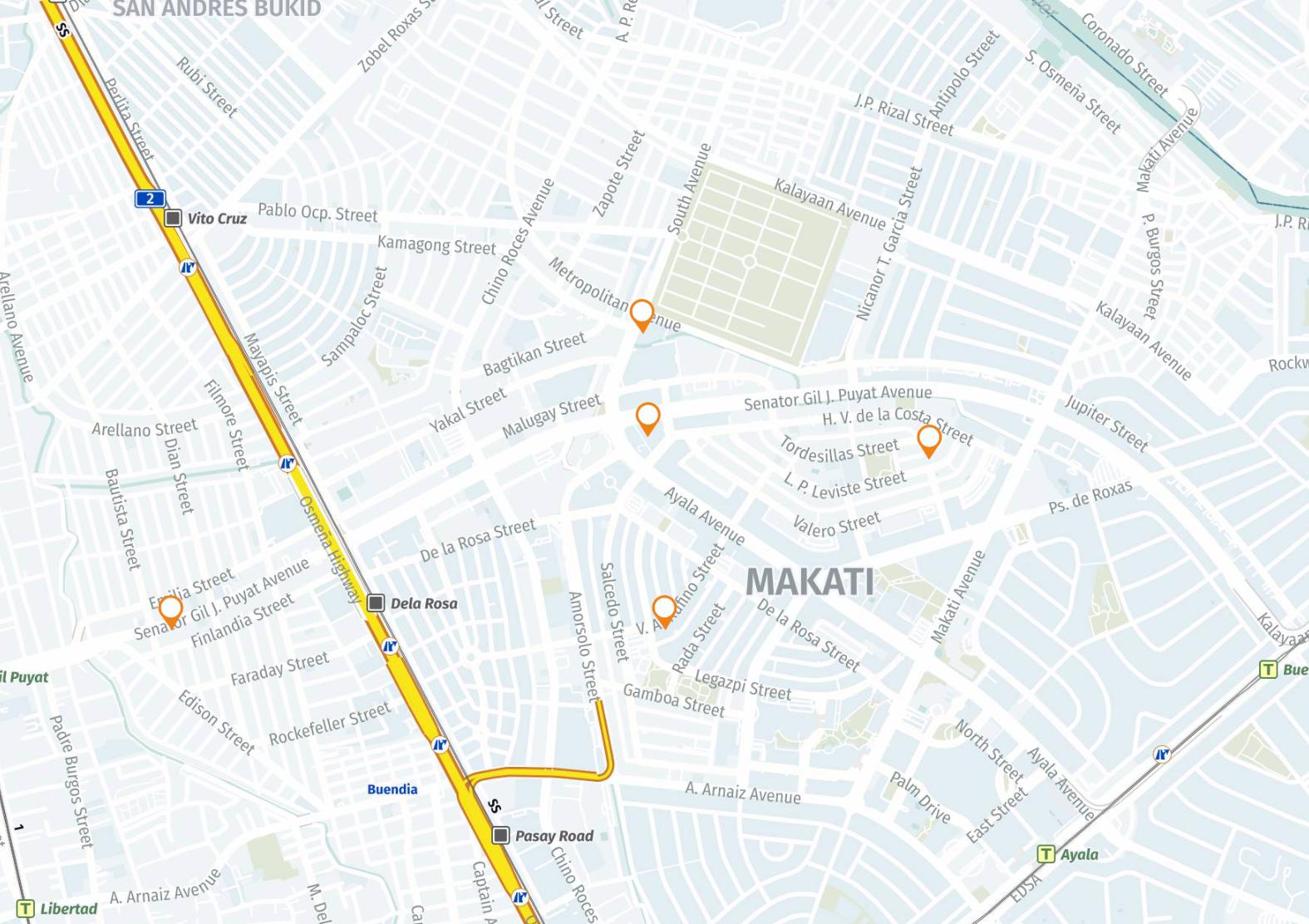





German-Philippine Chamber of Commerce and Industry
Address: 8F Doehle Haus Manila, 30-38
Sen. Gil Puyat Ave., Brgy. San Isidro, 1234 Makati, Metro Manila
Tel No.: +63 (2) 8519 8110
Website: philippinen.ahk.de
German Embassy Manila
Address: 25F Tower 2, RCBC Plaza, 6819 Ayala Ave, 1261 Makati City, Metro Manila
Tel No.: +63 (2) 8702 3000
Website: manila.diplo.de
Honorary Consul of the Federal Republic of Germany – Cebu
Address: Unit 304 B, PDI Building, Gov. M. Cuenco Avenue, Corner J. Panis Street, Kasambagan, 6000 Cebu City, Central Visayas
Tel No.: +63 908 883 9146
Asian Development Bank Headquarters
Address: 6 ADB Avenue, 1550
Mandaluyong City, Metro Manila
Tel No.: +63 (2) 8632 4444
Website: www.adb.org
Deutsche Gesellschaft für Internationale
Zusammenarbeit GmbH (GIZ)
Address: 9th Floor, Bank of Makati
Building, Ayala Avenue Extension near corner Metropolitan Avenue, 1209 Makati
City, Metro Manila
Tel No.: +63 (2) 6651 5100
Website: www.giz.de
German Club Manila
Address: Penthouse, Eurovilla II Building, 118 V.A. Rufino Street, 1200 Makati City,
Metro Manila
Tel No.: +63 (2) 817 3552
Website: www.germanclub.ph
Goethe-Institut Philippinen
Address: G/4-5/F Adamson Centre, 121 Leviste St., Salcedo Village, 1227 Makati
City, Metro Manila
Tel No.: +63 (2) 840 5723
Website: www.goethe.de/ins/ph/en/
German European School Manila
European International School
Address: 75 Swaziland Street
Better Living Subdivision
1711 Parañaque City, Metro Manila
Tel No: +63 (2) 8776 1000
Website: www.gesm.org
The Philippine Embassy in Berlin
Address: Luisenstrasse 16, 10117 Berlin
Tel No.: +49 (0) 30 864 95 00
Website: philippine-embassy.de
Philippine Consulate in BadenWürttemberg
Address: Königstraße 28, 70173 Stuttgart
Tel No.: +49 (711) 16445 268
Philippine Consulate in Bavaria
Address: Habenschadenstrasse 16 in 82049 Pullach/Munich
Tel No.: +49 89 72444850-80

Don’t miss a beat! Catch a glimpse of our daily work and milestones on social media, and explore our website for deeper insights into our services, events, and growing business community.





/gpcci
/GPCCI.org @ahkphilippinen
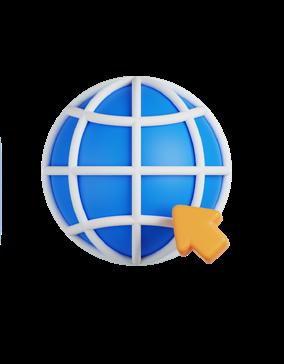

SOCIAL MEDIA CHANNELS WEBSITE
German-Philippine Chamber of Commerce and Industry
8F Döhle Haus Manila, 30-38 Sen. Gil Puyat Ave.,
Brgy. San Isidro,1234 Makati City, Philippines
Tel. +63 (2) 8519 8110
Fax: +63 (2) 5310 3656
Elenee Ventura
STATUS
July 2025
LEGAL INFORMATION
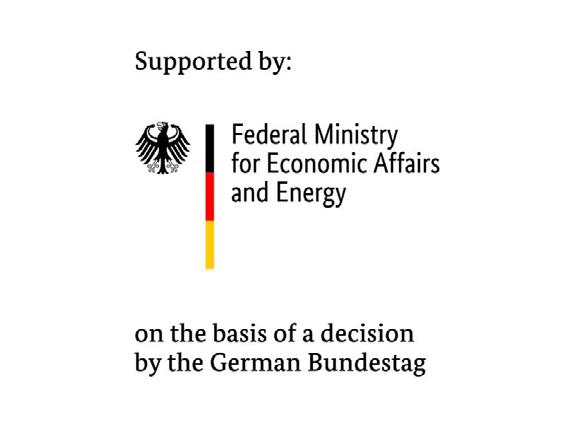
© German-Philippine Chamber of Commerce and Industry, July 2025
All rights reserved. Reprinting – even all or part of part – is only possible with prior explicit approval. With adequate care, we take no liability for the content.

Situated at the heart of Southeast Asia, the Philippines presents a growing and increasingly open economy supported by structural reforms and a demographic advantage. Its young, Englishspeaking workforce, expanding consumer base, and improving infrastructure make it a practical entry point into the ASEAN region. With greater liberalization across key sectors and active support for investment, the country offers steady ground for long-term partnerships and growth.
Discover the Philippines as a destination for opportunity - and for building something that lasts!
